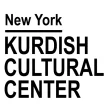Tahir Fatah, a Kurdish painter in Hollywood
Tahir Fatah grew up in a Kurdish village in northern Iraq, in a mud-and-straw house with no electricity or running water. He was the first of 13 children; the family slept together in one room.
His parents, wanting him to be religious, sent him to the mosque, but he had no interest in religion. At Quranic school, he had to memorize things he didn’t understand, and when he made mistakes, the mullahs beat him. The experience turned him against religion altogether.
What raised the spirits of this sensitive child wasn’t the Koran but the shimmering of light. He tried to replicate it by painting with stones and clay. Nothing else interested him, Sheri Laizer writes in a beautiful appreciation of the work of Tamir Fatah.
So when he was 17 his parents relented and sent him to Baghdad to attend the Institute of Fine Art. Freed from their pressure, he thrived life in the bustling, energetic capital. He loved the dreamlike quality of Harun al-Rashid’s architecture, the streets, the gardens. He felt no anti-Kurdish prejudice from Arabs. At the Art Institute, he excelled in painting.
But his period of creative freedom was short lived. After 1958 Baghdad became increasingly chaotic, with bomb attacks and economic blockades. The Baathists soon rose to power and liquidated the nationalists, then targeted Kurds and leftists.
Fatah realized he had to leave Iraq. It took three years, but his application for an American visa was finally approved in 1964. He arrived in the United States with $400 and a few words of English.
He made his way to the School of the Art Institute of Chicago, which was one of best places in the country to study painting, and gained a full scholarship. He painted the people and landscapes of home, which was never far from his mind.
After 12 years in Chicago, he moved to Los Angeles, where he apprenticed in set construction for the film industry, waiting for his chance. One day, as he once recounted to journalist Aris Janigian, a team was painting a religious mural in a small chapel. The art director, the lead artist, and a journeyman quarreled, and the journeyman stormed off. The lead artist told Fatah, the apprentice, to repaint a section of the wall. He did so with speed and precision and skill that amazed everyone.
After that, for decades, he earned his livelihood by painting sets for film studios including Universal and Disney, then for NBC television. In his years at the studios, he created sets of all kinds, from Ancient Rome to fairyland to underwater worlds. After work each day, he went home to do his serious painting in the evening.
His paintings are powerfully expressionist. In 1991, he painted the failed Kurdish uprising. President George Bush had encouraged Iraq’s Kurds to rise up but when they did, he abandoned them, saying, “We’ve drawn the line. We are not going to get involved.” Tahir named his painting Drawing the Line. Against a desolate mountain landscape, a huge X hung with skulls represents the deaths caused by Bush’s betrayal.
On film sets, Fatah learned to apply paint quickly with rollers as well as brushes. It opened up his style at home and gave him a respect for surfaces, finding that they can be layered to construct depth. As surfaces deepen, some images float to the top and others submerge. He paints, says Laizer, “to transcend the darker recesses of his conditioning, his culture and religion.”
Sources:
Sheri Laizer, “Looking Through Walls—The Timeless Tahir Fatah: A Painter in Perpetual Exile,” Ekurd.net,December 25, 2022.
Aris Janigian, “The Day Job: Tahir Fatah,” Los Angeles Times, June 11, 2006.
Photos of paintings are from Tahir Fatah’s Facebook page.



















